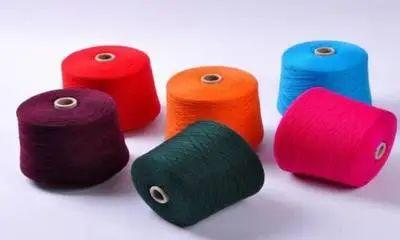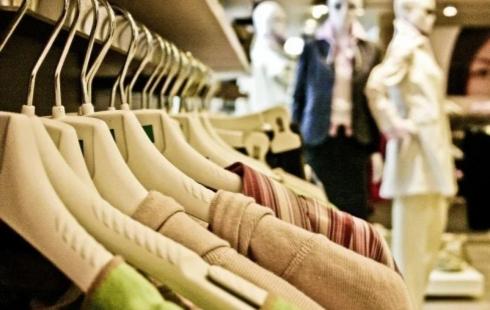In the first quarter of 2024, the global economy still maintained a weak recovery, some economies continued to bear pressure, and weak demand was still the main limiting factor. The global manufacturing industry is gradually getting rid of the weak state. The domestic economy has made a good start. The consumption performance is better than expected. The investment in manufacturing industry has accelerated growth, and production has been stabilized and repaired. The textile machinery industry had a smooth start in the first quarter. The main economic indicators achieved growth, reversing the downward trend since last year. The industry's exports were still in a negative growth range, but the decline gradually narrowed. In each sub sector of textile machinery, the sales of knitting machinery and weaving machinery are still growing. The sales of printing and dyeing machinery have increased from a decline, while the sales of spinning machinery have declined. The overall sales of chemical fiber and nonwoven machinery continue to decline.
Operation quality and efficiency
The industry's revenue and profit both grew positively. In the first quarter of 2024, the industry started well, with double-digit growth in operating revenue and profit. According to the statistics of the National Bureau of Statistics, from January to March 2024, 852 textile machinery enterprises above designated size achieved a year-on-year growth of 13.12% in operating revenue, 21.47 percentage points higher than the same period last year. The total profit of textile machinery enterprises above designated size increased by 41.46% year on year. The operating income profit rate was 6.77%, 1.21 percentage points higher than that of the same period last year. The loss of loss making enterprises decreased by 28.32% year on year; The loss area was 32.04, a year-on-year decrease of 2.32 percentage points.
The industry cost increased, and the proportion of three fees decreased. According to the statistics of the National Bureau of Statistics, from January to March 2024, the total cost of textile machinery enterprises above designated size increased by 11.53% year on year. The operating cost increased by 11.82% year on year, accounting for 89.52% of the total cost; The proportion of three expenses in the whole industry was 9.55%, a decrease of 0.42 percentage points compared with the same period last year, of which, the sales expenses increased by 9.01% year on year, accounting for 3.64% of the total cost; Management expenses increased by 14.60% year on year, accounting for 6.32% of the total cost; Financial expenses decreased by 30.63% year on year, accounting for 0.53% of the total cost.
The industry's asset liability ratio declined slightly. According to the statistics of the National Bureau of Statistics, from January to March 2024, the total assets of textile machinery enterprises above designated size increased by 4.10% year on year, and the asset liability ratio was 56.55%, 2.36 percentage points lower than that of the same period last year, lower than the asset liability ratio of industrial enterprises above designated size of 57.3%.
Industrial accounts receivable and finished goods inventory increased. According to the statistics of the National Bureau of Statistics, the accounts receivable of textile machinery enterprises above designated size from January to March 2024 increased by 4.98% year on year, 1.14 percentage points higher than the same period of the previous year. From January to March 2024, the finished product inventory of textile machinery enterprises above designated size increased by 3.69% year on year, 12.15 percentage points higher than that of the same period last year.
Survey of industrial enterprises
The Textile Machinery Association conducted an investigation on the operation of 127 textile machinery enterprises in the first quarter of 2024. From the summary results, the overall pressure on enterprise operation has improved compared with the same period last year. According to the survey, 58.3% of the enterprises' revenue exceeded the same period last year, 50.8% of the enterprises' profits increased compared with the same period last year, 56.3% of the enterprises' orders in hand exceeded the same period last year, and 49.6% of the enterprises' capacity utilization rate was more than 80%. At present, the primary problems faced by enterprises are insufficient demand in the domestic market and excessive price competition. Although the industry continues to be under pressure, the judgment on the industry situation in the first quarter of 2024 is far better than that expected in the fourth quarter of last year.
Import and export
According to customs statistics, from January to March 2024, China's textile machinery imports and exports totaled 1.651 billion US dollars, a year-on-year decrease of 10.54%. Including: textile machinery imports of 599 million US dollars, a year-on-year decrease of 17.70%; Exports reached 1.051 billion US dollars, a year-on-year decrease of 5.87%.
Import of textile machinery
From January to March 2024, textile machinery will be imported from 52 countries and regions, with a total import of US $599 million, a year-on-year decrease of 17.70%.
In terms of the category of imported products, the total import volume of auxiliary devices and spare parts ranked first, with a total import volume of US $174 million, up 18.54% year on year, accounting for 28.99% of the total import volume; The seven categories of products have increased by two and decreased by five. Except for auxiliary devices, spare parts and printing and dyeing finishing machinery, other categories of products have decreased by varying degrees. Nonwovens machinery has the largest decline. Affected by capacity saturation, the import amount of chemical fiber machinery has declined significantly.
From January to December 2023, Japan, Germany, Italy, Switzerland and Belgium are the main countries and regions importing textile machinery. The top five import trade volume is 2.493 billion US dollars, a year-on-year decrease of 4.23%, accounting for 84.12% of the total import volume. Japan continues to take the lead in importing countries and regions, and maintains a positive growth trend.
Export of textile machinery
From January to March 2024, China exported textile machinery to 174 countries and regions totaling US $1.051 billion, a year-on-year decrease of 5.87%
From January to March 2024, the customs statistics of textile machinery export by categories are shown in the following table. The export volume of knitting machinery is 315 million dollars, with a year-on-year growth of 18.97%, accounting for 29.97%, ranking first. Seven categories of products have two increases and five decreases. Among them, the decline of weaving machinery is more obvious, and the export of knitting machinery and printing and dyeing finishing machinery has achieved positive growth.
From January to March 2024, the total amount of exports to India, Vietnam, Bangladesh, Turkey and Pakistan accounted for 55.33% of the total export amount, a year-on-year decrease of 8.69%. It is the main country and region of China's textile machinery export.
The amount of textile machinery exported to countries and regions along the "Belt and Road" was 809 million US dollars, a year-on-year decrease of 4.42%, accounting for 76.96% of all exports, of which exports to Southeast Asia and Central and Eastern Europe showed a significant increase.
Industry situation outlook
In the first quarter of 2024, the global economy will continue to be under pressure, the consumption growth of developed economies will cool down, investment activities will continue to be depressed, and the inflation level will fall back as a whole. Among the developed economies, the U.S. economy will still be resilient, and the economic vitality of Europe will still be insufficient. Japan will start to raise interest rates to end negative interest rates. The domestic economy showed a moderate recovery, consumption, fixed asset investment and import and export data rebounded more than expected, and the endogenous driving force of economic growth was strengthened.
Looking forward to the second quarter of 2024, the process of global economic recovery will be tortuous and uneven. The differentiation of European and American economies will continue. With the signs of rising inflation in the United States, the time point of interest rate reduction will be postponed, and the interest rate level will be kept higher and longer, which will further restrain the demand for manufacturing. At the same time, geopolitical tensions and policy uncertainty are adverse factors that interfere with economic recovery, and food and energy prices may again be affected by geopolitical events. The domestic economy is also faced with such adverse factors as insufficient financing demand of the real economy, overcapacity in some industries leading to a decline in capacity utilization, and slow recovery of household consumption. All these factors lead to insufficient demand in the textile machinery industry, which has brought significant risks and challenges to the industry.
On the other hand, the favorable factors for the development of the industry are also obvious. In the first quarter, China's GDP grew 5.3% year on year, the momentum improved significantly, consumption grew steadily, and the investment confidence of enterprises in the textile industry increased; In addition, there is room for further release of the policy. The fiscal policy will be moderately strengthened, and the monetary policy will remain flexible and appropriate. With the support of the policy of encouraging and promoting the trade in of old consumer goods, the consumption growth potential is expected to continue to release, and the positive impact of equipment renewal and high-tech investment policies in the manufacturing industry will continue to be reflected; On the other hand, the acceleration of industrial transformation and upgrading driven by new quality productivity will also drive the demand for advanced equipment.
It can be seen that the environment facing the operation of the textile machinery industry is still complex and changeable, the sustainability of overseas demand recovery remains to be observed, and the domestic development foundation still needs to be strengthened. In the context of promoting new industrialization, the textile machinery industry will continue to rely on scientific and technological innovation to achieve digital, intelligent, high-end and green development. At present, the deep integration of artificial intelligence technology and advanced manufacturing technology will form a new generation of intelligent manufacturing technology, which will open up a broader world for product and equipment innovation, The textile machinery industry should grasp the development opportunities, promote high-quality development of the industry, and realize the transformation and upgrading of the industry.





